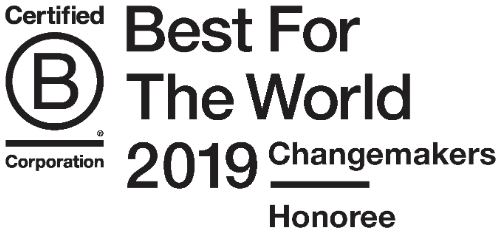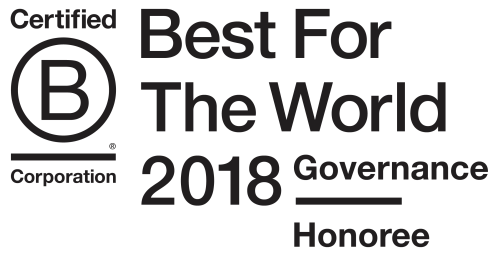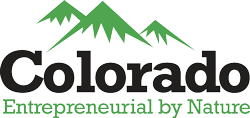As the humans who build the internet, now more than ever, we are responsible for infusing our work with real, human qualities and values. In our work, we have the opportunity (and responsibility) to reinforce interconnectedness, and the spaciousness and dependence on our natural environments that the human nervous system needs in order to survive. It is on us to build an internet that devalues isolation, antipathy, disembodiment, despair, disconnectedness, greed, injustice, oppression, speediness, and profit-at-all-cost. We can make an internet that outshines the toxic ethos of winner-takes-all.
Even before the COVID-19 pandemic, people were ever more likely to be isolated from one another and ever more likely to be relating to themselves, each other and the world through a rectangular web interface. Screen time has increased up to 60% since the beginning of the pandemic. Daily average number of Zoom users alone rose from about 10 million in December 2019 to 300 million daily users by the end of April 2020. The texture of our daily realities are increasingly negotiated through online experiences. And many of those online experiences are part of an internet that has become "a machine that applies the science of psychological warfare to the affairs of ordinary life, a machine that manipulates opinion, exploits attention, commodifies information, divides voters, atomizes communities, alienates individuals, and undermines democracy."
As producers of those online experiences, developers and designers are charged with the quality of that experience and what it implies in our lives as users. Because interaction that we have with each other as humans is so often mediated through software, why and how that software is built is increasingly impactful. We may not have as much control over the why but we can do a lot with the how.
At Dojo4 we understand that people, communities and natural environments have been harmed and are suffering because of manipulative and purely profit-driven applications of technology. We know that antidotes to this include spending time in nature and in genuine human connection. It's part of our manifesto and we've got some work-in-progress on building solidarity around that perspective. More on that soon, but in the meantime, here are some resources and toolkits:
Environmental sustainability - Right now the internet uses LOTS more electricity that you might imagine:
- Sustainable Web Design
- Designing for Sustainability by Tim Frick
- see also Tim and Mighty Bytes's resources here: mightybytes.com/sustainability/
Inclusivity and celebration of different abilities and ways of doing and being - this means building in ways that further the progress we've made toward gender, race, and accessibility equality but it also means working against an internet that can be censored and radically politicized:
The WWW can be nourishing and enriching rather punishing and depleting - what if spending time online soothed the nervous system and calmed the mind? It's not just the content but how the internet is designed to be used that can make that possible. For instance calm technology principals specify that a person’s primary task should not be computing but being human and that designers give people what they need to solve their problem and nothing more. *Resources: *
Don't be slave to commercial purposes - as every interaction we have online is increasingly marketed and marketable, it important to remember that we can build things that are entirely non-commercial and that don't engage users simply to monitize their data. Resources:
Support and reinforce art and artfulness - somewhere on the forked roads of alternate histories, the internet evolved as an interactive universe of art, rather than a marketplace. By incorporating art and artfulness into our work, we can help shift the balance to this reality. Resources and examples: Rhizome, Net Art Anthology, Eyebeam, Network Effect, Turbulence, Window Swap, MSCHF, Got Your Back, Olia Lialina, adaweb, JODI, Constant Dullaart, Scoopsnoodle, Neural, Furtherfield.
Integration of nature and technology - the Internet of Nature, for instance, taps into the natural capital on which we all rely to build smarter and greener digital systems. How can we integrate the principles and qualities of wilderness into what we build online?
- Internet and Nature Go Hand-in-Hand
- Cities and the Internet of Nature
- The Internet of Nature and how we can learn from biological networks
- the Animal Internet and what really happens there
Luckily, lots of people are thinking about this kind of thing. In particular, the Center for Humane Technology provides guidance to technologists for building a more "humane" internet. They remind us to examine our assumptions in these ways (see: https://humanetech.com/techprinciples/):
- Technology is never neutral: our values and assumptions are baked into what we build.
- See in terms of human nature: consider the vulnerabilities of the human brain.
- Shift product culture: emphasize humanization not productization.
- Create market conditions for humane technology: become a stakeholder in a marketplace that rewards humane technology.
Their Principles provide a practical touchstones that we can use as do our work:
- Obsess over values not engagement metrics
- Strengthen existing brilliance, instead of assuming that more technology is always better.
- Make the invisible visceral, instead of assuming that harms are edge cases- drive for deeper empathy with actual users.
- Enable wise choices, instead of assuming more choice is always better- help people make choices in ways that are informed, thoughtful, and aligned with their values as well as the fragile social and environmental systems they inhabit.
- Nurture mindfulness, instead of vying for attention.
- Bind growth with responsibility, instead of simply maximizing growth- invest in understanding the delicate cognitive, social, economic and ecological systems that your technology operates in.
We can build an organic, living, humane internet that emphasizes, rather than diminishes, meaningful human qualities. We are doing it, we can do it better, and we look forward to connecting with you about how to do it together.
> image, at the top, by Denis Sheckler<
 Tweet
Tweet









